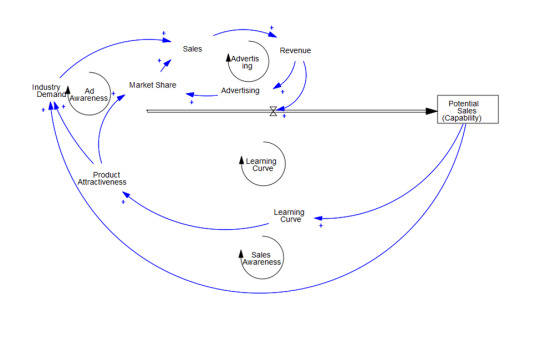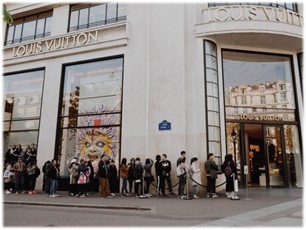Don't wanna be here? Send us removal request.
Text
Tan & Lovely[1] [2]

I feel a bit uncomfortable about re-purposing a photograph of “Tan Mom”, especially when I read of her health struggles. But if there’s a single image that can make the point of the world-wide obsession with altering our complexions, it’s probably any one of her well done, beef jerkey-esque head shots. Not to judge. I grew up in California in the 1980s. Having a golden-brown tan was considered the embodiment of a healthy look. I spent many a summer day out by the pool or at a nearby lake, getting as tan as I could, and rarely remembering (or caring to) apply sunscreen. In middle age now, I have a number of friends that have been diagnosed with some form of skin cancer. And even still, I feel better when my skin turns from pasty white to light tan after a few days in the sun.
It's not quite the same thing, you might say, as the author’s point of India’s deep rooted “color consciousness” and biases toward fair complexions. Scholars, however, differed on when and how this desire for fairness turned into a prejudice against dark skin. According to the authors “Some historians believed that the roots of this prejudice could be traced back to the Aryan invasion of India from the north… Others believed that this form of racism was intertwined with the history of casteism and colonialism in India. Historically, the fair-skinned Kshatriyas (warriors) and Brahmins (priests) were thought superior to Vaisyas (agriculturalists, traders, and cattle rearers) and the Shudras (servers to the other three castes). ‘There’s this notion about dark-skinned people belonging to the labor class because they’d work on the fields under the sun. White skin, on the other hand, symbolized power,’ stated Devdutt Pattnaik, a scholar of Indian mythology. This existing discrimination was exacerbated during India’s colonization by the British, where the white Westerners ruled over the native Indians, lending an air of power and supremacy to fairer skin. A more recent phenomenon, which was often quoted as perpetuating and intensifying this obsession, was the promotion of the Western-Caucasian ideal of tall, thin, and fair as a universal standard of beauty.”
So what do I know about all of this? More than you might think. I have spent much of the last several years living as an American ex-Patriot in Cambodia, and everything that we just read about India I witness on a daily basis in Cambodia. I returned home to Phnom Penh for Christmas after spending a fall semester largely indoors in Boston. I was pasty white and didn’t feel particularly energized or self-confident. One of the first things my mother-in-law commented to me was how white and handsome I looked. And after a few weeks of soaking up as much sun as I could on a lovely beach holiday to Koh Rong Island, she was quick to note, much less enthusiastically, how quick I was to get tan. The views of people like my mother-in-law seem to pervade the Cambodian people. Darker skinned individuals are associated with rural laborers and are perceived to be the less sophisticated, educated, and urbane portion of the population. Just the opposite with those that manage to maintain their complexions in a lighter shade.
When I first moved to Cambodia, I experienced dry skin and found myself in need of moisturizing lotion. Just about every lotion variety in every store I went to touted the whitening power of the lotion inside (and coincidentally most were sold in white bottles). I didn’t want to whiten my skin…I just wanted to moisturize it. Apparently, I was the only person in the country with this odd perspective. This was reinforced when I later ran out of sunscreen and went to purchase more. Every bottle of sunscreen advertised the dual purpose of sun protection plus whitening!

To extract some data specific to India “India’s first fairness cream, Afghan Snow, was launched in 1919… Fair & Lovely, launched in 1975… The cream inspired other consumer goods companies to launch skin-lightening products in the 1990s…, many more international skin-care brands became available in India, and most included skin-lightening products within their portfolios…the size of the Indian facial-care market was expected to grow about $2 billion by 2019 … Fair & Lovely controlled 53.6% of the market share for the facial moisturizer sub-category”.
I don’t claim to be qualified to judge the relevance or sensibility of this obsession with fair skin. Based on the early biases imprinted on my developing brain, I still think that tan skin suggests a healthy outdoor lifestyle. I don’t feel my best when I’m pasty white; but that is probably a combination of science and psychology. When I am Vitamin D deprived, I don’t feel my best and when I look in the mirror it becomes a self-reinforcing loop of perception and feeling. Maybe “Tan Mom” felt the same thing, but that’s not what our authors are talking about. That’s not what’s going on in India…or in Cambodia…or in any number of countries around the world where our perceptions of complexion and beauty are so ingrained in our upbringings that it’s hard to put a finger on exactly where or why the attitudes manifest.
[1] Image sources: Urban Hollywood 411, uv whitening skin lotion - Search Images (bing.com)
[2] Content for this article sourced from “Fair & Lovely vs. Dark is Beautiful” written by Rohit Deshpande and Saloni Chaturvedi, Copyright 2016, 2017, 2022, President and Fellows of Harvard College
1 note
·
View note
Text
The Chavs, Cambodian Counterfeiters, and Other Existential Threats to Burberry [1] [2]

When I hear “Burberry” I immediately conjure an almost-tangible image: a middle-aged (or middle-aged plus) woman in flip flops on a motor scooter, patiently waiting at a stop light, in a two piece silk-type fabric loungewear set; similar to what is pictured here, but with “Burberry” emblazoned so clear, consistent, un-miss able, and un-mistakable, that every observer can be absolutely bet-the-farm sure of one thing: it’s not Burberry. You see, I live in Phnom Penh, the capital of the still very much developing country of Cambodia. For the past several years, Burberry has been the clear favorite. For women, it’s the two-piece loungewear set that is worn when out shopping at any and all hours of the day. For men, it’s flannel and fabric shirts made entirely of a pattern closely resembling Burberry’s distinctive beige check. For every three of four Burberry loungewear suits you might see a Channel suit of similar fashion, but odds are it’s Burberry. The Asia-Pacific region accounted for 35.3% of the personal luxury industry’s global market in 2006. If I had to guess, this might be more like 0.353% for Cambodia in 2024. It’s a developing country. And while it is growing and developing and catching up to it’s modernizing neighbors of Vietnam and Thailand; it’s not there yet and most Cambodians just cannot afford to purchase Burberry or other high end personal luxury items.
Until today I had never heard of “The Chavs”, but in learning of this group learned of their threat to Burberry, not entirely dissimilar to the proliferation of counterfeit goods in the Cambodian economy. A Chav (again, a brand new term in my vocabulary) is a part of the British working-class subculture that are young, uneducated bullies, in baggy tracksuits with clunky gold jewelry, that loiter and smoke whilst intimidating upstanding citizens and worshipping Victorie Beckham[3]. While this sounds a bit of a hyperbolic take on a soccer hooligan, straight out of a Guy Richie film, let’s suspend doubt and take the Chavs exactly as described. Apparently, in addition to loitering and intimidating, The Chavs also enjoy Burberry’s distinctive beige check. I mean they really liked Burberry’s distinctive beige check pattern. In fact, Burberry’s beige check was so thoroughly adopted by the Chavs that it became as much or more of a symbol of the Chav’s as it was of Burberry. The Chav’s stole it from Burberry. What, if anything could Burberry do to reverse the damage done?

So what does this mean? What does this matter? How did this happen and what’s next for Burberry? I…don’t…know. The Richard Ivey School of Business Foundation paper was published in 2014 and provides data through 2006. The premise of the article is the 2005 announcement that CEO Rose Marie Bravo would be replaced by Angela Ahrendts: a highly successful veteran of the fashion industry, in 2006. According to the article “Though Burberry had enjoyed continued year over year growth, the sales growth at Burberry was not on par with the growth seen within the personal luxury industry.”. As it is currently the end of April 2024, and I had never heard of “The Chavs” until today, is it safe to assume that Burberry made peace with (or ruthlessly annihilated) The Chav nation and reclaimed their distinctive beige check pattern? And what of the rampant counterfeit market that I observe at every traffic light in Phnom Penh? Should Burberry crack down? And if it should, could it? Or is the ubiquitous Burberry apparel in Cambodia a reinforcement to the status to those in China and other nearby Asian countries that can afford the real thing? Once again: I…don’t…know. But you know what, that distinctive beige check pattern is pretty sharp. While I don’t think membership in The Chavs is in my future, assuming that they still exist, maybe you should look twice next time your in a Phnom Penh traffic jam and a middle aged man pulls up next to you on a motorbike in head to toe Burberry.
[1] Image sources: burrberry silk pajama suit counterfeit cambodia - Search Images (bing.com), burrberry pajama suit - Search Images (bing.com)
[2] Content for this article sourced from “Burberry” written by Marta Jarosinski under the supervision of Professor June Cotte, Richard Ivey School of Business Foundation, Copyright 2014
[3] “Burberry versus The Chavs”, BBC, October 28, 2005, by Clair Bothwell
0 notes
Text
My Grandfather’s Betamax and Modelling New Product Diffusion [1] [2]:

My grandfather loved his Betamax camcorder. Sometimes when I picture him he is carrying it with him, casually strung across his shoulder with the rainbow Sony strap (not unlike the one pictured) on display. My grandfather was convinced that Betamax was the superior and bound-to-be enduring technology. I imagine that he thought those home movies would be family heirlooms to be viewed again and again via compatible Betamax players.
I don’t want to paint the picture of my grandfather as naïve. He was well educated (with degrees in Electrical Engineering and an MBA to boot) and a highly successful executive in one of the world’s enduring mega-engineering corporations. Perhaps he would be better characterized as an earlier version of me: be that a more successful, more dignified, more worldly, and much taller version of me. But one thing is for sure, his intuition regarding the staying power of Betamax was wide of the mark. Certainly, we could dissect the various blunders on Sony’s part which ensured that Betamax technology would never achieve market saturation. Yes, it’s easy to Monday morning quarterback most things, but could the right models have been applied to predict, with a measure of accuracy, the rise and fall of Betamax? For that matter, can we model diffusion of new products to untested markets? Take, for example, pre-sliced peanut butter slices, adhesive bandages embedded with nanocrystals of pure silver, a PC plug-in to release scents, a collapsible wheel, and a modified synthetic substance for horse racetracks. While these products sound far-fetched, they all share something in common. They are all 100% real products.
One powerful tool for forecasting the market diffusion of new and innovative products is the Bass Diffusion Model. Prior to Sony’s sale of the first Betamax camcorder (to my grandfather or someone just like him), the existing customer base was exactly zero. As product adoption began, the positive feedback from the handful of early adopters was so minimal that it was negligible, and thus a predictive model such as the Bass model needed to capture alternate adoption channels such as news media coverage, advertising, and directed sales efforts by Sony. To solve this problem, Frank Bass developed the Bass Diffusion Model in 1969 (see sample model diagram below) which solved the start-up puzzle by postulating that potential adopters are made aware of the new product via external information sources which can be modelled as constant over time in terms of magnitude and persuasiveness (effectiveness)[3]. The aggregate adoption rate is the sum of adoptions resulting from word of mouth and adoptions resulting from advertising and external influences.

So, what happened to Betamax? Long before it could be cannibalized by superior technology it was dead in its tracks due to inferior technology: VHS (boo!). This was one of the rare times that Sony publicly and massively miscalculated. The popularity of this new technology was largely a function of externalities, specifically the size of the user base. By playing it close to the vest with its new technology, Sony kept the Betamax out of the hands of its competitors. We all know how that played out. Very soon every home had some type of VHS machine, and my family was left to watch my grandfather’s home movies while others were out renting E.T. and Tootsie and all of the other the latest blockbusters. The takeaway messages are numerous: 1) don’t trust your grandfather’s intuition, 2) all models have their limitations, and 3) pre-packaged peanut butter slices are only part of the solution without the jelly slices to go with.

[1] Image sources: image of someone making home movies 1980s betamax - Search Images (bing.com), peanut butter and jelly - Search Images (bing.com)
[2] Content for this article sourced from “Forecasting the Adoption of a New Product” by Professor Elie Ofek and Research Assistant Peter Wickersham, President and Fellows of Harvard College, Copyright 2005; “Four Products: Predicting Diffusion” by Professor John T. Gourville, President and Fellows of Harvard College, Copyright 2001; “Four Products: Predicting Diffusion (2008)” by Professor John T. Gourville, President and Fellows of Harvard College, Copyright 2008.
[3] “Business Dynamics” by John D. Sterman, copyright 2000.
3 notes
·
View notes
Text
Read this First Before You Hand the Keys to Your Company to a Bad Robot?![1] [2]:

Two initials have permeated nearly all our recent conversations across industries worldwide as the universal solution to our most challenging problems: A. I. Artificial Intelligence (A.I.) is standing by ready in the wings to solve every problem that we have now and future problems that haven’t even been invented yet. Leaders are simultaneously turning to A.I. to streamline their customer’s experience and remove some of those painful friction points that sometimes arise from dealing with a real person. The problem is: most people don’t really understand what A.I. is. The problem is: that most people don’t understand some of the fundamental limitations of A.I. to “understand” human behaviors. The problem is: A.I. might take your customer in precisely the wrong direction toward providing that excellent customer service long recognized as a cornerstone of building customer loyalty.
Depending on when we grew up, the letters A.I may conjure a variety of images and associations. For me, it’s Isaac Asimov’s 1950 classic “I, Robot”. And while I am well informed enough to know that an image of a sleek metallic human-esque robot has nothing to do with today’s A.I. systems, that’s the image that I am stuck with. And while I might like to burry my head in the sand and hope this whole A.I. thing will go away when I pull it out; I won’t, and it won’t. A.I. is here to stay and business leaders worldwide know that too. In fact, in many firms, A.I. has become the default for creating friction free customer experiences. Too much trouble to pay for an item? At Hudson and Aldi stores customers don’t have to; just walk out with anything you desire and skip the traditional check-out process entirely. But maybe, just maybe, we should take a beat and think first before eliminating humans from the equation entirely.

In a recent article published in Harvard Business Review, MIT Professor Renee Richardson Gosline examines why we need more, and not less friction, in the decision-making process to implement A.I. judiciously to the customer experience. In other words: think twice before you hand the keys to the kingdom off to any old robot. In Professor Gosline’s words “Companies should analyze where humans interact with AI and investigate where harm could occur, weigh how adding or removing friction would change the process, and test these modified systems via experimentation and multi-method analyses.” Professor Gosline goes on to describe how friction can be a good thing; one example is the use of consumer’s personal data. I think that all of us would prefer to take a few extra seconds to be informed of where our data will be used and be given the opportunity to provide consent; or not. There’s also bad friction to be wary of; a case in point is the reduced utility of the WhatsApp service when customers do not consent to revised terms. However, an astounding 65% of executives are unable to even explain how their specific A.I. models make decisions!
So, what should leaders do? Gosline suggests a strategy of informed awareness coupled with experimentation where possible. “When assessing the role of friction in digital transformation, positive or negative, consider the behavioral tendencies and welfare of customers”. Revisiting the example of informed consent for data sharing: yes, it adds time and friction to the customer experience, but maybe that’s “good friction” that will increase the overall customer experience and build customer loyalty. Gosline advises that corporations experiment (and fail), in order to build confidence that ideas have been well tested and vetted. IBM experiments (a lot!) because tools for experimentation are easy to use. Yes, digital transformation is something we all need to get used to, but Gosline advocates for “human-first digital transformation” built around respect and trust for customers. If you have read all of this and you are still planning to hand the keys of your company over to a bad robot, at least remember to tip her well!
[1] Image sources: bad robot picture - Search Images (bing.com), i robot, Action, Mystery, Sci fi, Futuristic, Robot, Technics, 1irobot, Crime, Dystopian Wallpapers HD / Desktop and Mobile Backgrounds (wallup.net)
[2] Content for this article sourced from “Why AI Customer Journeys Need More Friction” by Professor Renee Gosline, Harvard Business Review, June 9, 2022
1 note
·
View note
Text
Fine Tijuana Wine and Other Luxury Products[1] [2]
It turns out that most of us are wine snobs. Maybe that’s not news to some of us; that we would pay more and expect to enjoy a wine from the Napa Valley more than say…Tijuana. The connection between associations and preconceptions regarding where a wine is made and the influence on consumer behavior have long been documented. Yes, we’re biased, and just about everyone expects a French wine to naturally be more palate pleasing than a similar varietal from Texas.
Our pretentious cousin might drill on about how critical the right wine pairing is to our enjoyment of the meal; but now there’s concrete data from a 2007 proving that our preconceptions about wine actually influences how much we expect to enjoy the accompanying food and ultimately how much we eat. And to clarify: it has nothing to do with the location where the grapes were grown and harvested. In fact, this correlation has nothing to do with the actual wine varietal, vintage, quality, taste, or any characteristics of the wine itself. This behavior is influenced exclusively by our expectation of taste!


To experiment, an inexpensive bottle of Cabernet Sauvignon (hailing from neither California or Texas) was relabeled as “Noah’s Winery” with either California or North Dakota added to the label in large letters. In the first study, subjects were led to tables where they were served either the “California” or the “North Dakota” wine. Prior to tasting, they document their taste expectation (how tasty they thought the wine would be on a scale of 1 to 9). They were then allowed to drink the wine and with it sampled a cube of cheese. They were then asked to score, using the same 1 to 9 scale, just how tasty the wine and cheese was. Guess what!?!? Those that were given “California” wine expected it to taste better than “North Dakota” wine. Probably no surprise there. What is causing researchers to raise eyebrows is that participants overwhelmingly thought that both the “California” wine and accompanying cheese tasted significantly better than the “North Dakota” counterparts. Keep in mind that it is THE EXACT SAME wine and cheese!
In the second study, participants were provided with one full complementary glass of wine (again an inexpensive bottle of Cabernet Sauvignon relabeled as “Noah’s Winery” from California or North Dakota) with their meal. Almost everyone drank all their wine (yes, people like their free drinks!) and those that thought they were drinking California wine ate substantially more of their dinner. Again: EXACT SAME WINE! The conclusion being that our inherent biases and preconception of quality expectation increase the consumption of companion food. The conclusion here is that we form expectations of quality from various factors, one clearly being a bias of location with regard to wine that in turn has an impact on how much we expect to enjoy, how much we do enjoy, and how much we consume. So the next time your cousin invites you over to dinner, make sure to swap out the label on the Tijuana wine and replace it with a label from France; everyone will sure be glad that you did.
[1] Image sources: the-popular-and-poor-district-of-lomas-taurinas-in-tijuana-near-the-us-mexico-border.jpg (612×408) (istockphoto.com), The Best Wineries in Sonoma County (tripsavvy.com)
[2] Content for this article sourced from “Fine as North Dakota wine: Sensory expectations and intake of companion foods” by Wansink, Payne, and North, Physiology & Behavior (2007)
1 note
·
View note
Text
Can You Forecast Strategy Better than a CEO? Take this Quiz [1] [2]:

Question 1: You are the CEO of J.C. Penney; should you eliminate coupon and clearance racks and replace them with branded boutiques?
Question 2: You are the CEO of Kohl’s; should you add furniture to your offerings?
Question 3: You are the CEO of Cracker Barrel Old Country Store, should you switch from incandescent to LED lights?
Question 4: You are the CEO of Kohl’s (again); should you open stores an hour later Monday through Saturday as a means to decrease operating costs?
Question 5: You are the CEO of Family Dollar, should you invest in refrigeration units so that you can sell eggs, milk, and other perishables?

You may have incredible instinct and intuition for business strategy. Your incredible instinct and intuition may be wrong, dead wrong, as were some of the CEOs and leaders of the businesses described above when they decided to let their instinct and experience guide them to predict future consumer trends. Let’s examine these cases one at a time:
Ron Johnson made drastic changes upon assuming the leadership role at JC Penney: he replaced human retail clerks and employees with automation where possible and took drastic steps to upscale J.C. Penney’s reputation. It backfired. Within 17 months sales had plunged and Johnson was looking for a new job.
When Kohl’s tested furniture at 70 stores they measured a net decrease in sales. Products that had less floor space because of the addition of furniture experienced a steep drop and those 70 stores lost customers.
Cracker Barrel Old Country Store found that the LED lights made front porches look so dim that customers assumed the restaurants were closed. Kohl’s ran a trial run at 100 stores to discover that opening later resulted in an essentially negative cumulative decline in sales. Family dollar found something unexpected: the refrigerated items resulted in an increase in the sales of traditional dry goods which in turn had an even larger impact on profits.
So how could the Ron Johnson have predicted the future, and how were some of these companies able to so deftly navigate unknown and treacherous waters? The answer lies in experimentation! And sure, there are lots of ways that experiments can go wrong and produce erroneous or misleading data. The experiments must be carefully planned and executed to ensure reliable results. Sometimes the cost of an adequate sample size may be prohibitively expensive; but bigger doesn’t always mean better. According to a 2014 HBR study “the required sample size depends in large part on the magnitude of the expected effect”. Meaning, if a company anticipates a large effect, the sample size can be smaller. For an effect that is expected to be less significant, the sample must be larger: the smaller the expected effect the more sampling that needs to be done to show a reliable result. Randomized field tests can play another important role in reducing systemic bias.

The key takeaway is that the experience that led business leaders to experience past success isn’t necessarily formulaic. Any past success is just that, in the past. Transactional data often used to justify future strategic moves is based entirely on the bast behavior of customers. Times are changing so fast based on economic conditions, the post-pandemic hybrid work norm, fashion, politics, and an endless variety of other factors. What was true in the past may not likely be true in the future, and without carefully deployed experimentation and data collection, corporate leaders may as well invest in crystal balls to predict future consumer behavior.

[1] Image sources: image of laboratory experiments inside department store - Search Images (bing.com),
image customers waiting outside a department store - Search Images (bing.com), image of crystal ball - Search Images (bing.com), image of ceo - Search Images (bing.com)
[2] Content for this article sourced from “The Discipline of Business Experimentation” Harvard Business Review, December 2014
1 note
·
View note